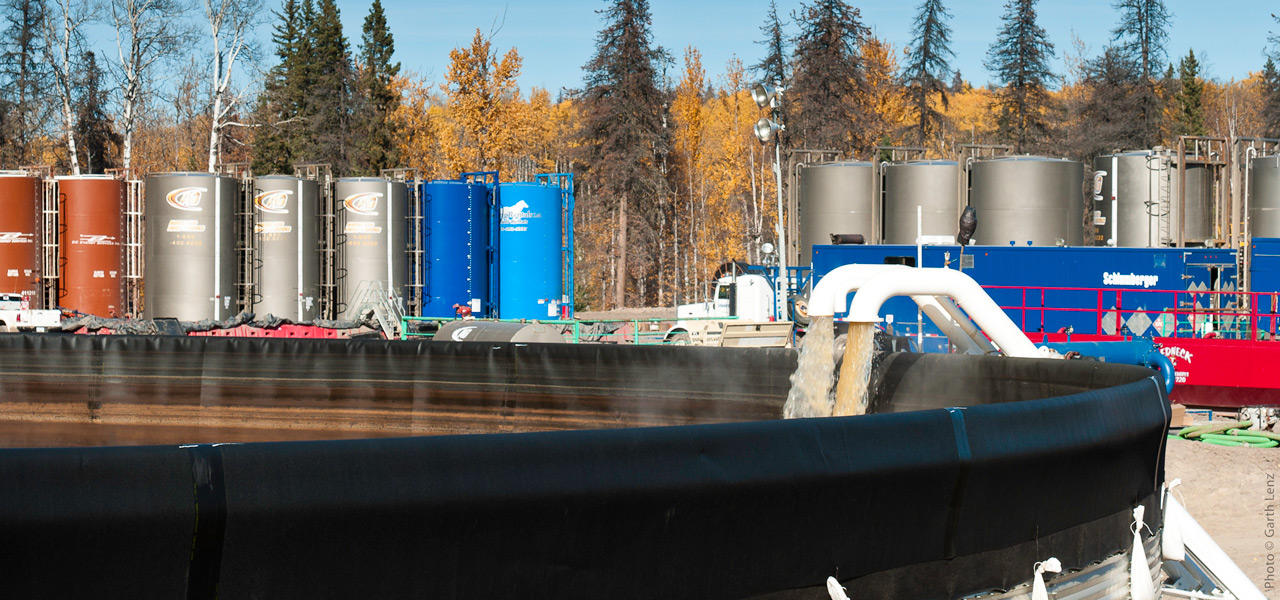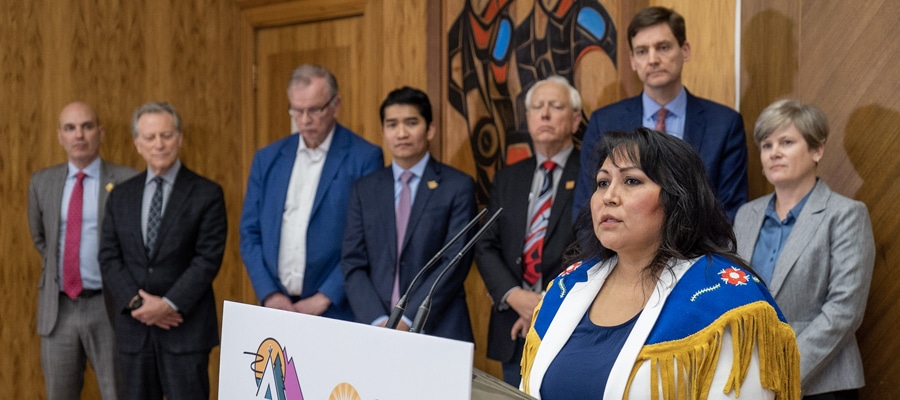Time to rethink the approval process for fossil fuel industry developments in BC’s northeast
When the provincial government created the Oil and Gas Commission in 1998, it did much more than open a “one stop shop” for speedy oil and gas industry approvals; it also set British Columbia on a collision course with First Nations.
The consequences of that collision course are more apparent with each passing day, and are most evident in a potentially precedent-setting civil suit launched by the Blueberry River First Nation (BRFN), whose territory overlays northeast BC’s richest natural gas play—the Montney basin.
The Blueberry River First Nation is suing the province because speedy one-stop approvals have set the stage for vastly diminished hunting, trapping and fishing opportunities.
Rapidly spreading gas industry infrastructure—fracked gas wells, pipelines, compressor stations, roads and more—has shredded BRFN territory into tiny fragments that no longer support the fish and wildlife they once did. Those impacts, combined with other industrial incursions, mean that three quarters of all BRFN territory is just 250 metres away from one industrial disturbance or another.
Rapidly spreading gas industry infrastructure has shredded Blueberry River First Nation territory into tiny fragments that no longer support the fish and wildlife they once did.
“Before oil and gas development, I used to be able to hunt all over the territory. Not anymore. Last summer, I spent 18 days in the bush. I travelled 98 miles on horseback. I did not see a single moose,” BRFN member Wayne Yahey said in a 2016 affidavit filed in support of his nation’s civil suit, which goes to trial in March 2018.
Since Yahey’s affidavit, BRFN members have learned of further assaults to their traditional lands. Dozens of large earthen dams have been built on their territory, apparently with the full knowledge of the Oil and Gas Commission, yet without the energy companies that built them first obtaining the proper authorizations.
Chris Tollefson, an environmental law professor at the University of Victoria, has watched the legal developments and characterizes the upcoming case as “a collision between constitutionally-protected rights under treaties and an attitude by the provincial government that is allowed to take away those rights on an incremental basis over time with no consequence.”
The BRFN is not alone in fighting against this. To the north of BRFN territory, the Fort Nelson First Nation has successfully used the courts and provincial tribunals to suspend a water licence that one natural gas company was awarded and to at least temporarily stop a number of mining projects from proceeding without the mining proposals first undergoing a provincial environmental assessment.
Clearly, there is a need to radically rethink how industry developments in the region are reviewed and approved—and in doing so, place First Nations firmly in the driver’s seat rather than pushing them to the margins and with no choice but to launch costly, time-consuming court challenges.
There is a clear need to radically rethink how industry developments in the northeast are reviewed and approved, and ensure First Nations are firmly in the driver’s seat rather than pushing them to the margins.
Happily, there are examples already in place to inform what a new approach could entail.
The most important example is on the Haida Gwaii archipelago where, following years of staunch resistance to destructive industrial logging practices, members of the Haida Nation secured firm agreement to “co-manage” the Gwaii Haanas national park reserve and Haida heritage site in partnership with the federal government. That landmark agreement paved the way for another co-management agreement that sees the Haida co-managing forest resources on the north of the archipelago with the provincial government.
There is every reason to emulate that kind of model in northeast BC by granting First Nations powers to shape if, where or how energy industry developments occur on treaty lands.
Such a system would require other related reforms, including requiring energy companies to say exactly where they intended to operate well in advance of operations commencing. This type of reform has precedent in rules that once governed logging companies in the province.
It would also require new zoning rules that declare firm “no-go” zones where companies cannot operate and other areas where firm limits on gas extraction are imposed. This type of reform has a corollary in the Great Bear Rainforest agreement, which included extensive First Nations sign-off.
Still another reform would require that companies using vast amounts of water for industrial purposes pay much more for the water they use. Higher industrial water use fees would encourage conservation and provide funds that could be used to complete long overdue water studies.
As the lawsuit initiated by the BRFN moves slowly toward an important date before the courts next year, the time is long overdue to fix a broken system and set things on a new course in BC’s remote northeast region.
—
Learn more by reading the report, Fracking, First Nations and Water: Respecting Indigenous rights and better protecting our shared resources.
This piece originally appeared as an op-ed in the Times Colonist.
Topics: Environment, resources & sustainability, Features, First Nations & Indigenous, Fracking & LNG






